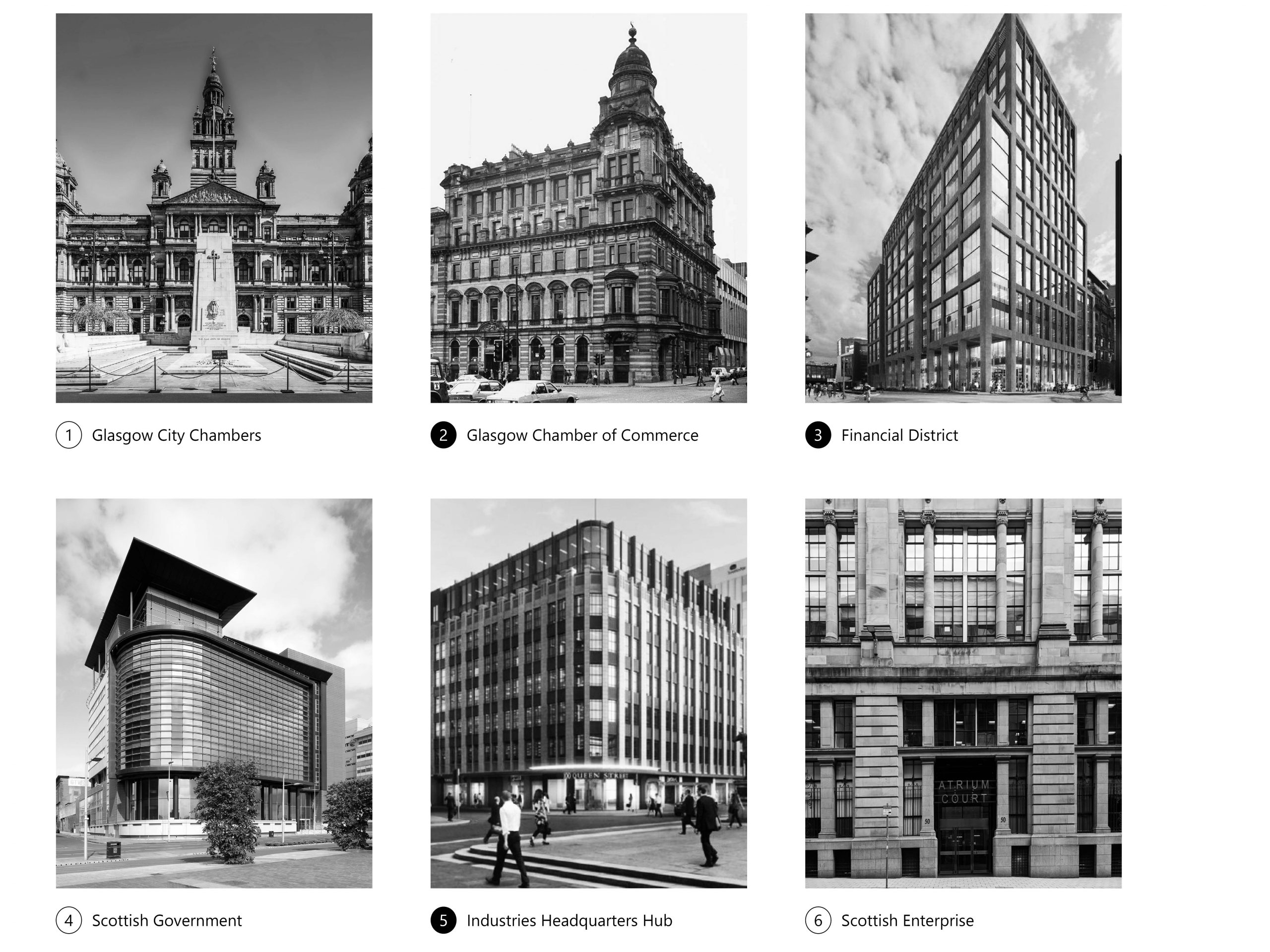In a city of 175 square kilometres and 600 000 inhabitants, the question of economic and political regulation is an important one. We can wonder what territories do these institutions control, and investigate the reach of their influence.
What the map indicates is the absolute centrality of such institutions, even in our era of bottom up initiatives. Among the city centre, the demarcation stays fairly obvious according the activities, and continues to thrive in less deprived areas: Local institutions remains firmly outside of the boundaries, where the institutions pertaining the metropolitan areas of Glasgow are historically located on George square, whereas the ones belonging to the Scottish government are implanted on the riverfront, at Broomielaw.
The once renowned shipbuilding industries of Glasgow may have been replaced industries more oriented towards the consumer, but their headquarters also remain in the city centre. And finally the financial organisations, such as the international firms and banking, have settled in what is now considered the financial district.
All in all, the institution structuring our economy are still very much located where the instance of power and money were a century ago, whereas Glasgow has continued to expand.
Key Themes: Boundaries, Industry, Inequality, Political


